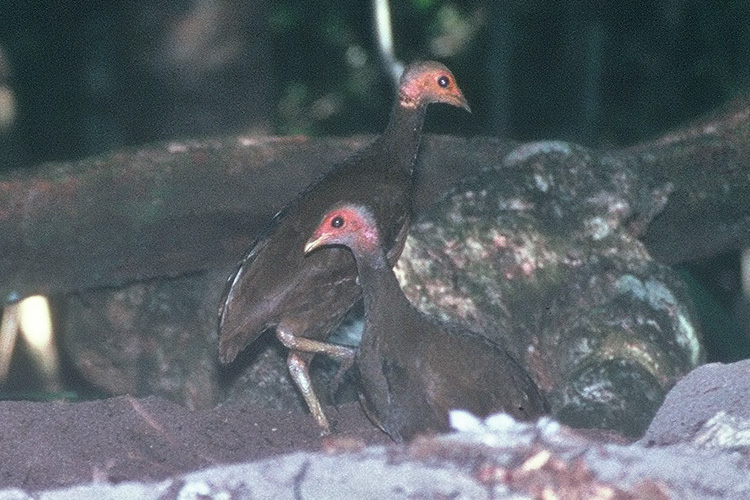A unique bird, a unique island, and unique customs that bind them all.
On Oct 04, 2012, Ministry of Environment and Forests (MOEF) rejected a proposal to create a missile-firing testing system on Tillanchong island, a narrow strip of island in Nicobar.
Tillanchong is an unfamiliar name for many. Uninhabited except for a police post, the Navy chose this Nicobar island for erecting a missile range for shooting dummy missiles. Tillanchong is a long, narrow ridge of land, prone to erosion. Holding the largest surviving populations of the endemic Nicobar Megapode (Megapodius nicobariensis), it is also a protected sanctuary and an Important Bird Area (Islam and Rahmani, 2004). The decision was pending with the National Board for Wildlife (NBWL), where the NBWL was informed by the Navy that such a project necessitated distance from people and an undulating landscape.
Dr. Asad Rahmani of the Bombay Natural History Society (BNHS), along with the local Andaman and Nicobar forest department, conducted a site inspection report for the NBWL on the possible impacts of this project. His report gave a firm no to the project on two grounds. Firstly, the Tillanchong IBA holds the most stable population of the Nicobar Megapode, found nowhere else in the world except the Nicobars. Secondly, the Tillanchong island is sacred for the Nicobarese people.
But faced with charges that it was ‘obstructionist’, the NBWL gave in-principle approval for one-time firing of missiles on the island, in the 25th meeting of the NBWL.
Apalled by this decision, the Nicobarese people of Nancowry, Kamorta, Trinket, Katchal, Terassa, Bompoka and Chowra islands wrote to the MoEF asking for a repeal of the decision. The island is uninhabited for a reason — the Nicobarese believe that their ancestor’s spirits reside on the island. This land, considered sacred by them, has more Nicobar Megapodes than in many other places. This is because of the religious taboos against hunting. Clearly, in the case of the Tillanchong, it is the strong link between cultural diversity and ecological diversity which has nurtured the Nicobar Megapode, and the other species on the island.
The Nicobarese visit Tillanchong only in one season annually with a local priest, to pray, to feel, and to revere the island. It is, what geographer’s call a sense of ‘place’ — a rootedness to a spot, bound through custom, which elevates a ‘space’ to a place.
The MoEF’s decision to reject the proposal is recognition not just of the right of the Nicobar Megapode to continue building its unique nests of leaf matter on Tillanchong, but also of the Nicobarese to continue being the true conservationists of Tillanchong.
References– Islam, MZ, and Rahmani, AR (2004), ‘Important Bird Areas in India- Priority sites for Conservation’, Indian Bird Conservation Network: Bombay Natural History Society and BirdLife International.


 CI is a non-profit, non-commercial portal that aims to facilitate wildlife and nature conservation by providing reliable information and the tools needed to campaign effectively.
CI is a non-profit, non-commercial portal that aims to facilitate wildlife and nature conservation by providing reliable information and the tools needed to campaign effectively.